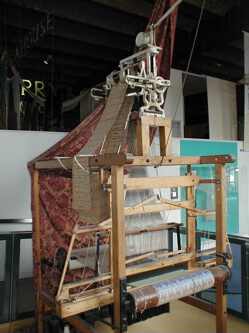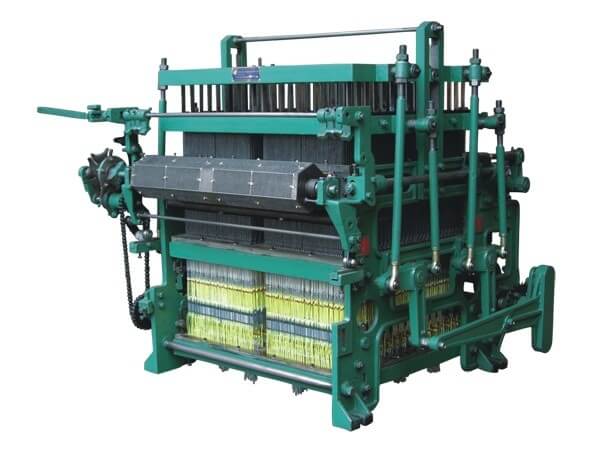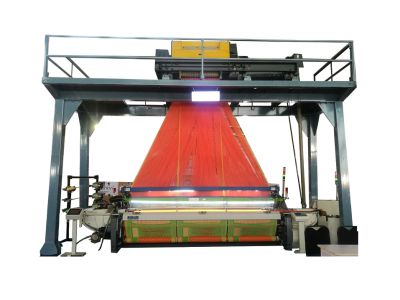What is a Jacquard Loom?The powered fabric loom attachment known as the Jacquard Loom. It was created by Joseph Jacquard and first revealed in 1801. It gives instructions to the loom regarding how to create complex fabrics using a series of punch cards. For instance, to create a textile brocade, a loom might include several hundred cards with holes that correspond to hooks which can be lifted or lowered. 
Because it was the first device to employ replaceable punch cards to program a machine to carry out automated operations, the Jacquard Loom is significant to the history of computers. Like today's modern computer programs that can be designed to accomplish numerous activities, developing a device that could execute different functions would be useful. Charles Babbage also took influence from the Jacquard Loom when he planned to employ perforated cards in his analytical engine. Herman Hollerith contributed to the founding of IBM by utilizing the concept of punch cards to both store and input data into a piece of computing equipment. Punch cards are no longer used on textile looms today. They can instead produce a pixelated digital copy of any image using a digital scanner. This digital version is utilized to build the loom's operating instructions such that a textile copy of the scan can be produced. How does Jacquard Loom work?Developed by a French Joseph Marie Jacquard, the Jacquard mechanism made weaving intricate textiles like damask easier. It was initially shown in 1801. The device made use of a network of thousands of punched cards. A row of something like a textile pattern was represented by every row of punched holes. This change not only improved weaving productivity, enabling the weaver to manufacture fabrics with patterns of practically infinite scale and complexity without assistance, but it also had an impact on how computing technology would grow in the future. What is the origin of the loom?From the 1820s onward, jacquard looms are known to have been utilized mostly in Scottish textile manufacturing. They are thought to have been active in Dunfermline for damask weaving and in Paisley, Kincardineshire, and Angus for the creation of shawls. Brothers Robert and James Hamilton employed this specific loom. For many households in Scotland, weaving was an everyday activity. For more than 200 years, weaving was a significant cottage industry in Stonehouse. However, as loom automation developed over the 20th century, it became less necessary for human input, and by the 1940s, the industry had completely vanished. The maker's mark, "J.HOOD, NEWMILNS," indicates that renowned lace and loom maker Joseph Hood produced the loom. During the middle to end of the 19th century, Hood, who was located in Newmilns, Ayrshire, had a significant impact on the creation of looms and the growth of the Scottish textile manufacturing industry. What is a mechanical jacquard machine?
The fabric pattern was initially kept on punched cards that were connected to create a continuous chain on mechanical Jacquard machines. The Jacquards were frequently tiny and only independently operated a limited number of warp ends. This needed to be repeated several times over the loom's width. Wider patterns might be stitched all across loom breadth due to greater control and fewer repeats that were provided by bigger capacity devices or the utilization of numerous machines. A factory must select the looms and shearing mechanisms that best meet its business needs. Generally, costs rise if more warp control is needed. Therefore, it is not cost-effective to buy Jacquard machines if a dobby mechanism will suffice. The Jacquard machines cost more to purchase and operate since they are sophisticated and require workers with greater levels of experience. To create the patterns for the loom, a very costly framework and maybe a card-cutting machine are also needed. Weaving is more expensive because Jacquard systems have higher fault rates. What is an electronic jacquard machine?
A Frenchman is credited with modifying the Jacquard mechanism in 1855 such that electro-magnets could operate it. There was a lot of excitement, but because the experiments were unsuccessful, the advancement was quickly forgotten. At ITMA Milan in 1983, Bonas Textile Machinery NV introduced the first effective electronic Jacquard. Despite the machines' initially modest capacities, advancements in technology have allowed Jacquard machines to manage over 10,000 warp ends with a single end. This eliminates the requirement for repetitions and symmetric designs and offers practically limitless freedom. Smaller batch sizes are made possible by the computer-controlled machines' significant reduction in downtime caused by changing punched paper designs. Electronic Jacquards, on the other hand, are pricey and might not be necessary for a plant weaving huge batch numbers and simple designs. Larger machines that provide single-end warp management are very costly and can only be used in situations where extreme adaptability or highly specific design requirements are required. For instance, they are the perfect tool to expand the skills and variety of the specialized linen Jacquard spinners who are still working despite the fact that the majority of large-scale commodity weaving has relocated to minimal-cost regions.
Next TopicWhat is an Internal Speaker
|
 For Videos Join Our Youtube Channel: Join Now
For Videos Join Our Youtube Channel: Join Now
Feedback
- Send your Feedback to [email protected]
Help Others, Please Share










